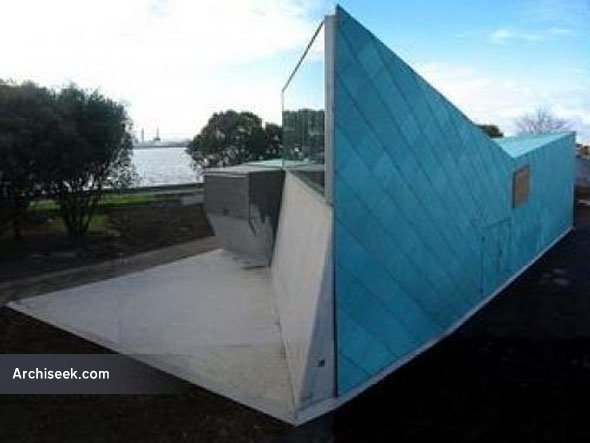2004 – Pumping Station, Clontarf, Co. Dublin

As part of a programme of public space design initiatives for Dublin City Council in association with the Royal Institute of Architects of Ireland, a phased programme of works was developed to reinforce and amplify the existing amenity of the village centre at the junction of Vernon Avenue and the Clontarf Road on Dublin’s northern coastline.
The first phase required redevelopment of an existing pump station with the provision of a maintenance depot for Dublin City Council Parks Department and an ESB substation. The dilapidated structure was removed above ground while maintaining all pump operations below. A new folded plate superstructure of reinforced concrete forming an interlock of canted walls and roof slabs was cast in situ onto the extended existing concrete two-storey basement.
The new volume rotates across the reclaimed ground to catch the light and open relationships with the Clontarf Road, the village, the sea wall and the docklands beyond the estuary. This massing intimates the internal interrelationship of the tripartite programme within the single object. A closed public building, each façade opens alternately to pump station, park depot or electrical substation, each autonomous but linked spatially by a shared requirement for natural ventilation in a folded slot of space which incorporates the requirements for separate toilet /shower facilities and water tank.
The structure and access doors are dressed in a prepatinated copper shingle rain screen to envelope the form as a continuous wrapping; it is punctured twice by the ventilation slot which is expressed in untreated iroko louvers and will weather grey. On each exposure this patination will develop differently to exaggerate the modelling of the enclosure. This skin is eroded to the east allowing the gathered rain waters to discharge over and stain the shot blasted concrete, the building being considered as a gutter.





